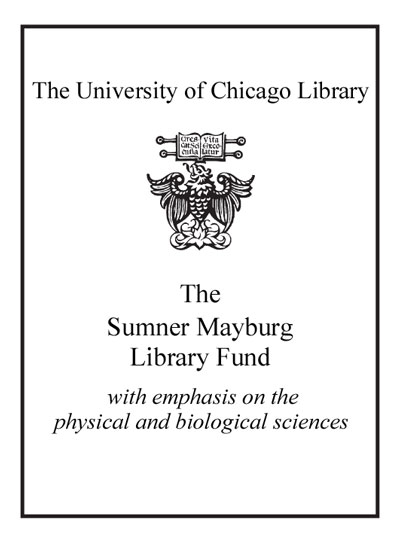Fundamentals of ecological modelling /
Saved in:
| Author / Creator: | Jørgensen, Sven Erik, 1934- |
|---|---|
| Edition: | 3rd ed. |
| Imprint: | Amsterdam ; New York : Elsevier, 2001. |
| Description: | xii, 530 p. : ill., maps ; 25 cm. |
| Language: | English |
| Series: | Developments in environmental modelling ; 21 |
| Subject: | |
| Format: | Print Book |
| URL for this record: | http://pi.lib.uchicago.edu/1001/cat/bib/4789635 |
Table of Contents:
- Preface, Third Edition
- Acknowledgements
- 1. Introduction
- Physical and mathematical models
- Models as a management tool
- Models as a scientific tool
- Models and holism
- The ecosystem as an object for research
- Outline of the book
- The development of ecological and environmental models
- State of the art in the application of models
- 2. Concepts of Modelling
- Introduction
- Modelling elements
- The modelling procedure
- Types of model
- Selection of the model type
- Selection of model complexity and structure
- Verification
- Sensitivity analysis
- Parameter estimation
- Validation
- Ecological modelling and quantum theory
- Modelling constraints
- Problems
- 3. Ecological Processes
- Space and time resolution
- Mass transport
- Mass balance
- Energetic factors
- Settling and resuspension
- Chemical reactions
- Chemical equilibrium
- Hydrolysis
- Redox
- Acid-Base
- Adsorption and ion exchange
- Volatilization
- Biogeochemical cycles in aquatic environments
- Photosynthesis
- Algal growth
- Zooplankton growth
- Fish growth
- Single population growth
- Ecotoxicological processes
- Problems
- 4. Conceptual Models
- Introduction
- Application of conceptual diagrams
- Types of conceptual diagrams
- The conceptual diagram as modelling tool
- Problems
- 5. Static Models
- Introduction
- Network models
- Network analysis
- ECOPATH software
- Response models
- 6. Modelling Population Dynamics
- Introduction
- Basic concepts
- Growth models in population dynamics
- Interaction between populations
- Matrix models
- Problems
- 7. Dynamic Biogeochemical Models
- Introduction
- Application of dynamic models
- Eutrophication models I: Overview and two simple eutrophication models
- Eutrophication models II: A complex eutrophication model
- A wetland model
- Problems
- 8. Ecotoxicological Models
- Classification and application of ecotoxicological models
- Environmental risk assessment
- Characteristics and structure of ecotoxicological models
- An overview: The application of models in ecotoxicology
- Estimation of ecotoxicological parameters
- Ecotoxicological case study I: Modelling the distribution of chromium in a Danish fjord
- Ecotoxicological case study II: Contamination of agricultural products by cadmium and lead
- Ecotoxicological case study III: A mercury model for Mex Bay, Alexandria
- Fugacity fate models
- Problems
- 9. Recent Developments in Ecological and Environmental Modelling
- Introduction
- Ecosystem characteristics
- Structurally dynamic models
- Four illustrative structurally dynamic case studies
- Application of chaos theory in modelling
- Application of catastrophe theory in ecological modelling
- New approaches in modelling techniques
- Problems
- Appendix 1. Mathematical Tools
- Vectors
- Matrices
- Square matrices, eigenvalues and eigenvectors
- Differential equations
- Systems of differential equations
- Numerical methods
- Appendix 2. Definition of Expressions, Concepts and Indices
- Appendix 3. Parameters for Fugacity Models
- References
- Subject Index


